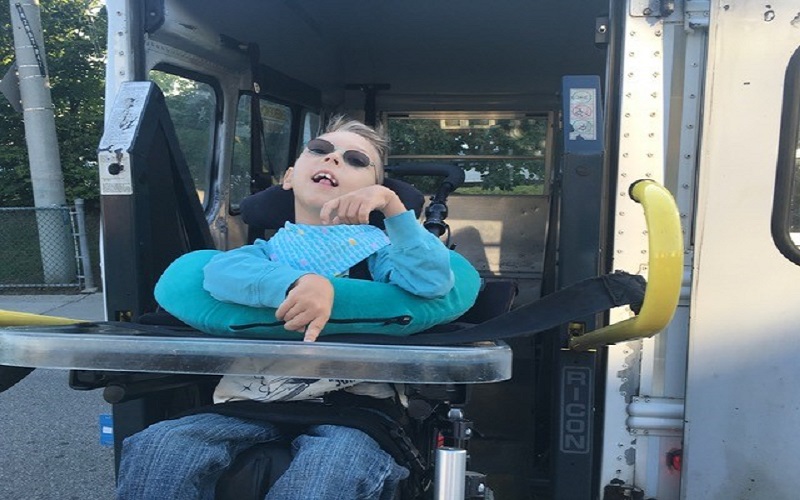By car, his school is about a twenty-minute drive away. Add another pick up or two and that time can easily double.
Last school year he had a super bus driver and a reasonable 40-minute commute.
I was hoping for the same route and driver this year, but late on Friday afternoon before the long weekend ahead of the start of school, I found out Sebastian would have to ride the bus for nearly an hour each way, extending his school day by almost two hours.
For a kid with cerebral palsy and seizure disorder, that extra time makes a big difference.
Anxiety set in, as I now had to worry about him having seizures from exhaustion. Worse, having them on the bus without anyone noticing.
Would he even be able to go to school every day? Would he be so tired from the ride that the next day it would be difficult for him to learn?
Sebastian isn’t a napper, even when he’s exhausted, so I knew he wouldn’t fall asleep on the bus.
Riding the bus for him isn’t the same as it was for me when I was a kid. I grew up in the country and rode a large bus with dozens of other kids.
Even though I was one of the first and last off the bus each day, I had loads of friends to talk to. It was social.
For Sebastian, there have always been only one or two other kids on the bus, each secured in their own specific seating; which for Sebastian is his wheelchair.
He also requires assistance for communication, so it’s not as though he’s enjoying extra social time. But what he is enjoying is some independence.
The new bus route making me feel again that sense of discrimination and frustration settle in to the pit of my stomach at the lack of real inclusion in our school system.
The frustration for me runs deeper than an extended bus ride. Why can’t my kids go to school together?
We live across the street from our neighbourhood school, which my daughter is attending for the first time this year. I walk her across 45 minutes after Sebastian has gotten on the bus.
Gone are our mornings of doing jokes together for him to share with his switch. Will our breakfast routine change too?
Sebastian’s dad works late in the evenings so we have family breakfasts compared to family dinners. Will I even have time to eat before he gets on the bus?
On the first day of school Sebastian has a few seizures and isn’t well enough to go to school.
He’s happy to take his sister across the street to her new school and pick her up again later that morning for lunch at home with us. My daughter can come home for lunch. Sebastian wishes he could too.
Day two and Sebastian is good to go. All smiles, which only alleviates a little of my anxiety. Will he be able to eat all of his breakfast? Will I get his meds and bag packed in time?
Will I remember to brush his teeth, have time to clean out his feeding bag from his g-tube, and put on his AFOs and hand splints before the bus arrives?
Messages, notes, assistive devices all packed the night before, no time to review the joke from two nights ago.
Mentally ticking off the list while feeding him breakfast, packing his lunch, and watching the clock.
Listening for the beeping of his bus as it backs up into place and turns on the flashing lights, hoping drivers will be patient enough not to pass, as required by law.
At the end of the school day, I walk over to pick up my daughter and then wait another 40 minutes for Sebastian’s bus to drop him home. When it arrives, he’s exhausted.
More seizures on day three but he manages a half day at school and I pick him up early. He stays home on day four.
How is this going to be work all year? Should I take him to and from school to keep him healthy, at the cost of his independence?
